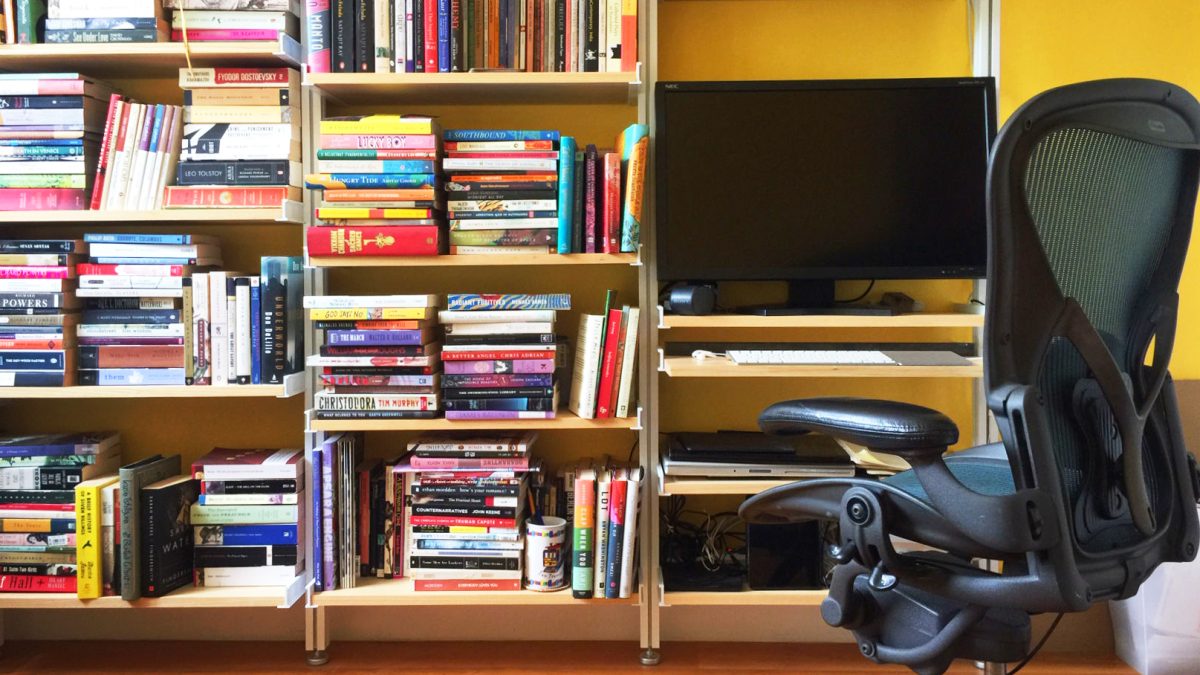Don’t Write Alone Where We Write
Where Nawaaz Ahmed Writes
The space that anchored me through a year of the pandemic, a safe harbor, feels too claustrophobic now. I crave to be outside.
I sold the novel I had been working on for ten years the fall before the pandemic hit. I told myself at that time that I would create a workspace for myself in my apartment as a reward. I was a real writer now that the book was finally going to come out.
The novel had been written in various places over the many years: in my apartment and in libraries in Ann Arbor where I started it during my MFA in 2009; in a few residencies around the country; in various countries around the world the year I decided it was cheaper to travel than to pay health insurance and rent (India, at my parents’ home; Switzerland, at a friend’s place; in rented rooms in Turkey and Germany); and in various sublets in Brooklyn the year I was deciding whether I wanted to settle there and re-establish a home and community I’d given up along with my job as a computer scientist to pursue writing.
When I finally got my own place in Brooklyn, I continued working on the novel at a cheap particle-board desk with steel legs that I bought when I first arrived in the United States as a graduate student, in the 1990s. The desk was light and collapsible, and I held onto it over the many moves, as if I couldn’t get rid of it until some promise of my student days had been met. When the novel found a home, I felt I was ready to finally let go.
I wanted to build my new workspace myself. A few years ago, I took up woodworking, to have the pleasure of completing something in a reasonable amount of time—the opposite of what working on the novel felt like. With the book sold, and while I was waiting for the editorial process to begin, it seemed the perfect time to work with my hands, to take my mind off the anxieties of the upcoming book release.
I researched frames and standards that would allow wall-mounted shelves for my books. I was also enamored by the idea of mounting my monitor, keyboard, and computer and accessories vertically on additional shelves, thereby using the scarce apartment space more efficiently than a large unwieldy desk could. Because I was afraid of drilling holes into the wall and perhaps destroying the wall, I settled on a frame with floor-to-ceiling poles that used compression to stay in place, similar to tension rods. My previous experience, a simple matter of installing blinds, had left me and the wall scarred, the blinds a tad crooked.
The shelves themselves I intended to make of white ash, simple and rectangular, that only involved cutting the wood down to size with a table saw, planing with a jointer and planer to get it to the right thickness, sanding, and finishing. The most time-consuming part would be applying the three coats of clear polyurethane to preserve the milkiness that I loved about white ash.
In the end, after I ordered the poles, I was told that, for what I had in mind, I would need to tether either the top or the bottom to the wall with ties and screws. To avoid the kind of mishaps I feared, I enlisted the help of a more capable friend. He’s an artist and a sculptor, and had built his own bookshelves the previous year, and I’d always admired how confidently he approached his varied projects.
A few years ago, I took up woodworking, to have the pleasure of completing something in a reasonable amount of time—the opposite of what working on the novel felt like. The idea seemed to work out. The shelves slid into brackets which could be attached anywhere on the frame. One shelf accommodated my monitor at eye-height; I’m quite short, and most store-bought desks require my feet to rest on a stool for ergonomic seating. Another shelf, fixed a few inches lower, and pulled out and balanced with the help of a steel bar of the right weight to prevent it from tipping over, acted as a keyboard and trackpad tray. More shelves underneath stored my processor, backup hard drives, and other peripherals.
Photograph courtesy of the author
The workspace was ready just as the pandemic forced a lockdown. For six cloistered months, I worked on the final edits for the book at my new “desk.” The book got done, but something about the workspace doesn’t quite feel right. I like having books around me for inspiration, but the vertical setup has some disadvantages. There’s no place to spread out the papers and books I’m referring to. The monitor sits pretty close to the wall, allowing for little to distract me, but maybe there’s something essential to writing about being able to stare beyond the screen into the distance.
But I have written in less conducive spaces across the world, and it hasn’t really mattered before. So perhaps it’s just pandemic fatigue. The space that anchored me through a year of the pandemic, a safe harbor, feels too claustrophobic now. I crave to be outside. I crave other interactions with the world.
Or perhaps it’s simply that the book I worked on for ten years has left a hole, like the desk I carried around for twenty, and I have yet to find the right something to take their place.
Photograph courtesy of the author


